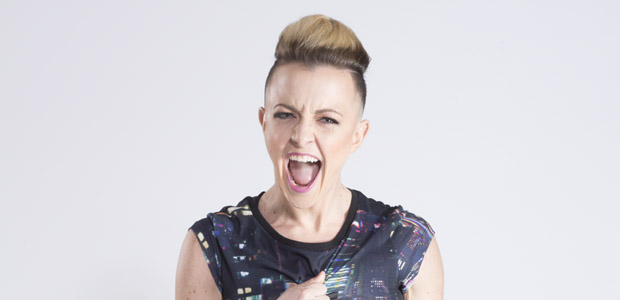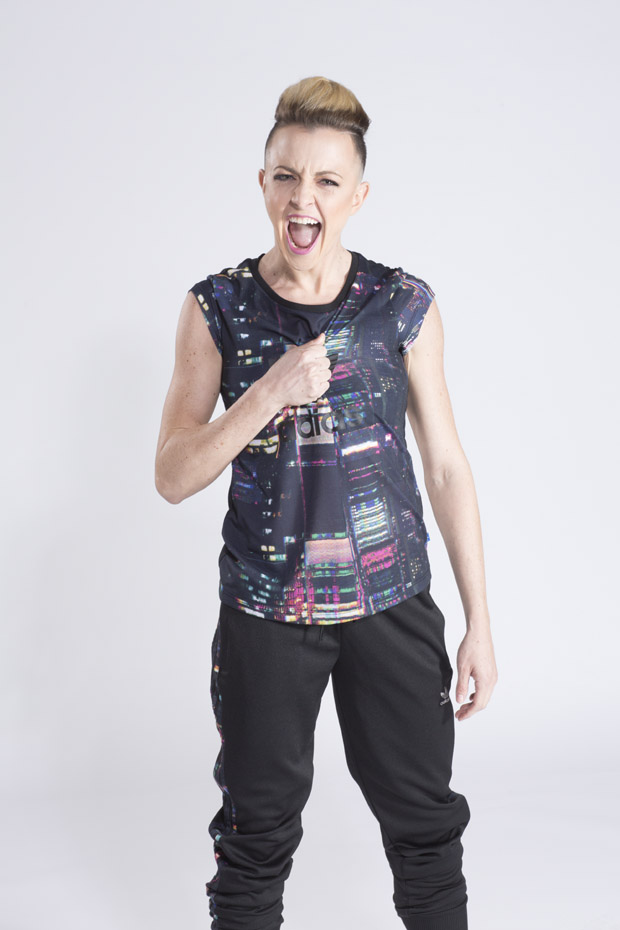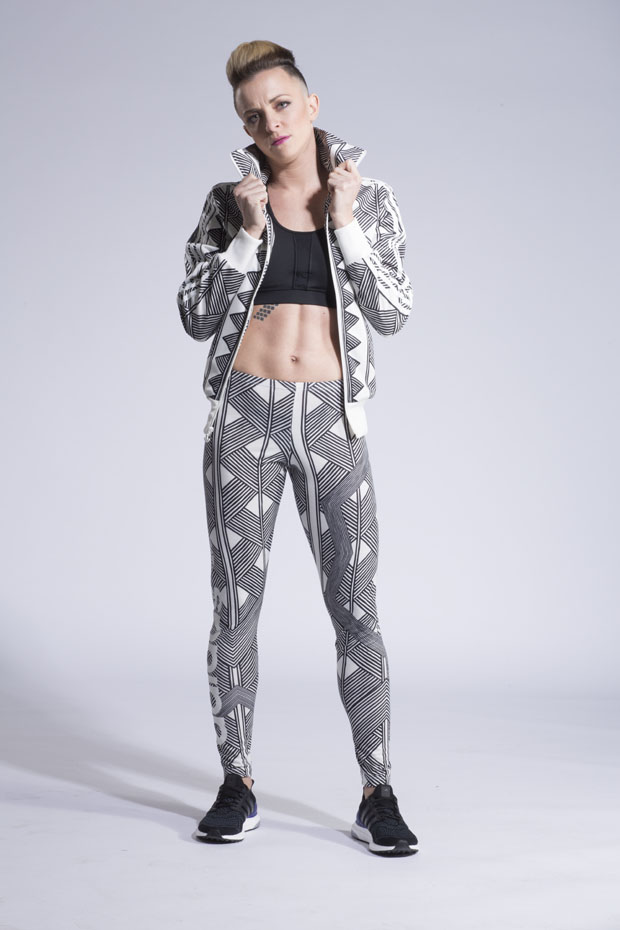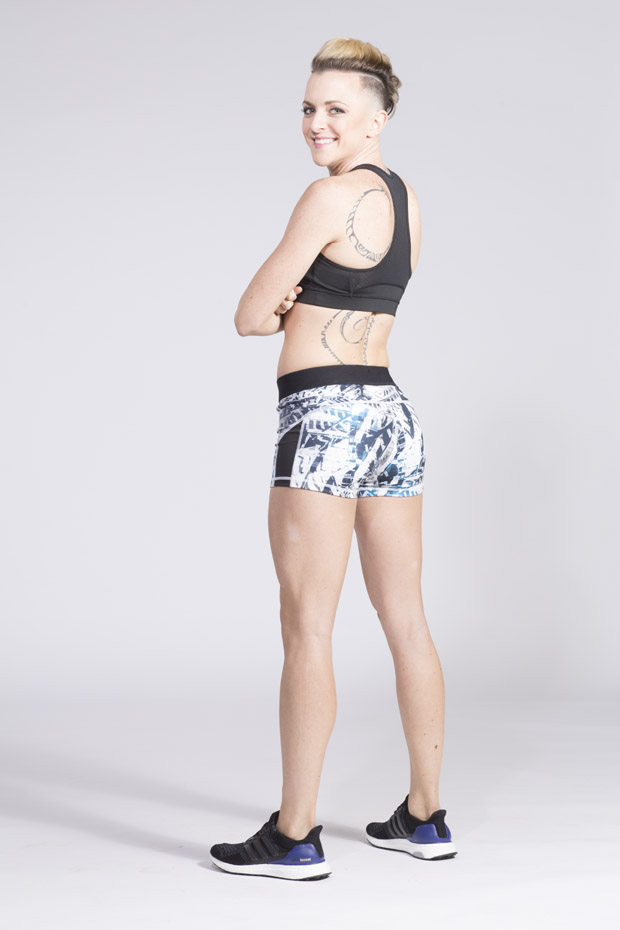The Outsider: Fawn Dorr

In aspiring Olympian Fawn Dorr, the Canadian running scene gets its first true iconoclast
Fawn Dorr always seems to cause a stir. Leading up to the London Olympics, the dual-citizen created controversy in the Canadian elite community when she decided to leave the U.S. and attempt to make the Canadian team. Her arrival was met with sharply divided opinions. Some runners and coaches even protested against her.
In the tight-knit Canadian track scene, Dorr is a rare iconoclast. She’s vocal on social media, with thousands of followers. Her hair and style stand out on and off the track. She’s brash, honest and in your face. Fawn Dorr is more than just an athlete – she’s a brand. And she’s just what Canada and the sport needs right now. We talked to the talented hurdler on the eve of our cover shoot about childhood summers in northern Ontario, why running in the U.S. is like going to war and having a hairstylist in every city in which she races.

How did you get into running?
In elementary school, we had track and field month. I won every event except the “softball throw.” I knew I was a pretty good runner even when I was very young but I really started running in middle school. In Grade 7, I was dared by two older kids to join the cross-country team. I’d never heard of cross-country, but I knew a thing or two about dares. I never turned them down. So, I joined the team and never looked back.
I was brainwashed into believing that the value of my being was in direct correlation to my performance. This sounds crazy, but its results are palpable. It made me relentless.
You started as a longer distance runner. How and why did you end up a sprint-hurdler?
I started long distance running because of a dare, but truthfully I was always more of a 800–1,500m person. Even though I’ve been ranked in the top 10 in the world in the 400m hurdles, I still don’t really consider myself to be a sprinter. I’m still a miler in my mind.
When I was in high school I suffered a series of traumatic head injuries. The first, I was hit by a car going 60 km/h while I was riding my bike. My head broke the windshield. A few months later, I collided with a teammate at practice and fractured my skull. I had bruising on the front and back of my brain and suffered memory loss. I developed a neurological disorder from the accidents which prevented me from training and competing in long distance events.
I had shown promise in the steeplechase and loved it, but was having too many problems training for it. My coach and I found that I had fewer issues the shorter the events. We turned my 2K steeples into 400m hurdles, and I was New York state champion in 2006. I was then recruited by colleges to focus on the 400m and 400m hurdles.
You dreamt of being a miler as a kid. What’s so magical about the mile?
In my opinion, the miler is the stallion of track and field. Four laps is the perfect combination of speed and mental strength. It’s enough time to think, to have a mental battle as well as a physical one. It’s an event when knowing your competitors is equally as important as knowing yourself. I think the way a person runs a mile is a microcosm of how they live their lives. I don’t want to just watch someone run and win. I want to watch a race that bares a runner’s soul.

Hurdling is neat. But why hurdling?
Don’t get me wrong, I love hurdling but it’s not exactly an event that anyone in their right mind chooses. It’s more of an event that chooses you. The training is gruelling. It’s a complicated event. It’s made up of the technique of a 100m hurdler, the endurance of an 800m runner and the speed of a 400m sprinter. With so many contributing components, it’s an event that I never stop learning. I’ve never had anything come easy to me in my life. Whether I like it or not, we were kind of made for each other.
What is the NCAA experience like?
If you survive it, the NCAA creates athletes of a different breed. I was a workhorse in college, running the 200, 400, 400 hurdles and the 600m. I was brainwashed into believing that the value of my being was in direct correlation to my performance. This sounds crazy, but its results are palpable. It made me relentless. Failure was not an option. It made hard work just a day’s work, and it moulded me into a fierce competitor. My college
team was comparable to the military. We fought and struggled with and for each other everyday. We never left anyone behind and shared a bond only those back-to-back in the trenches might understand. To me, the D1 NCAA system was war. Not everyone is built to be a soldier.
You’ve spent a lot of time in the U.S. running. How has the transition been moving to Canada and trying to make the Canadian team?
I’d be lying if I said it’s been easy. Athletics Canada is so different from U.S.A. Track and Field. AC has given me opportunities and support that I never would have received as a U.S. athlete. As an elite athlete, oftentimes, it’s the little things that make a big difference.
I awoke in the middle of the night, and went for a long run in the dark. I made my decision and let that loss go.
Socially, it has been a struggle. I don’t know very many Canadian athletes because I was an American for so long. For the first few months of practice in Toronto, I hardly spoke to anyone and warmed up alone. AC athletes are like family, and for a while, I was the black sheep. I was even referred to, on multiple occasions, as a “plastic” Canadian – meaning, fake. In the U.S., it’s “every person for themselves.” Having this mentality only furthered my isolation. Where I once saw another athlete’s fall as my own opportunity, I’ve had to rewire my thinking into picking them up. You have to understand, I wasn’t allowed to listen to my feelings in college. I was a machine programmed to do as I was told.
Canadian athletes care about each other. I had to learn to both care, and let myself be cared for.
I’ve also realized that I’m not familiar with Canadian media and often I’m quite clueless. People are like, “Who is this Canadian girl, and where did she come from?” I like people not knowing who I am. If they don’t know me, they’ll underestimate me. And I love being underestimated.
Although it’s a huge change, it helps me focus on the things that matter: training and recovery.
You’re a dual citizen. Tell us about your experience as a kid in both countries.
My mother is Canadian and my father is American. I went to school in New York. My parents own tourist resorts, one of which is a hunting and fishing resort called the Temagami Riverside Lodge in northern Ontario. They would take me out of school early in May and I’d live on the resort all summer until a week before school started.
People think I’m a city girl, because I’m from New York and I love fashion and shoes. But the truth is that most of my fondest memories were there in the backwoods, with no electricity and with my family. I know how to start a fire with flint in the rain and can tell north from south by the location of the stars and what side of a tree the moss grows on.
I return there every year after my racing season is over, just so I can detox from the fast life I’m usually living. It’s a large part of who I am and I’ve always considered it to be my home more than anywhere else. My whole life is a juxtaposition of extremes: Canadian and American, long distance running and sprinting, fashion and nature.

You’re very active on Twitter and Instagram.How can it be useful for an elite runner?
Twitter and Instagram and social media in general, are the future. It gives fans and potential sponsors complete access to you in a way that was never possible before. My race is less than a minute long, and doesn’t give viewers any opportunity to get to know me. That’s not a lot of camera time. If you want to know a little more about me, you can find out on Twitter and Instagram. I have a very active relationship with my fans. I take them very seriously, because, after all, without fans, the sport doesn’t even exist. Social media also makes me more marketable. When I say something or post a picture, how many people see it and hear it?
You went through an extreme low after not making the U.S. Olympic team. Tell us about that experience and how you got back to running.
It wasn’t until after the Olympic buzz had faded that I could finally glance at my running shoes without crying. A few months later, one night, my girlfriend sat me down and said in a very loving and supportive but stern way that I needed to decide what I was going to do. She told me that I had to make a decision to either leave running and move on with my life, or find the courage to lace up my shoes and just go for a run. I wept like a child. And the next day, when she was at work, I awoke in the middle of the night, and went for a long run in the dark. And just like that, I made my decision and let that loss go.
You obviously have a lot of fashion sense. What are your favourite pieces in your collection?
People think that fashion is superficial. But clothing is a reflection of our culture, our beliefs and who we feel we are. It’s how we present ourselves to the world. That’s not superficial at all, that’s profound. I have a few favourite pieces.
I have a pair of thigh-high Christian Louboutin boots that I simply couldn’t live without. My go-to piece is a BCBG Runway leather jacket because it’s fabulous, casual and goes with everything. I also have a fur snood that I wear quite often. I have a Zana Bayne Leather bra top that’s to die for, but can only be worn on special occasions because it’s quite memorable. My rule of thumb is lace, leather and fur. Some of my best pieces in my closet are the ones I’ve made myself. I love to buy things, take them apart and put them back together in a different more fashion-forward way. It’s a hobby that I’ve seriously considered pursuing.
You always have incredible hair. Do you get it done before a big race?
Wearing a racing uniform doesn’t leave a lot of room, or fabric for that matter, for self-expression. I use my hair as a means of expressing myself and my style. My hair grows incredibly fast, so yes, when I go to a race, getting my hair cut is a must on the pre-race to-do list. I even have hairstylists and barbers in multiple cities that come to my hotel to do my hair on race day, like my friend Cee Russo from New York, who was also a stylist for Lady Gaga.
What’s your plan leading up to 2016 and beyond?
This could be my last shot. I have no time for excuses. I’m giving it all I’ve got. That’s the only way I can live with myself, win or lose. After the next Olympics, I’m sure I’ll once again need to make a decision, but before I can give thought to that, I first must get through today. Today’s practice is all I think about. What am I doing today to better myself for tomorrow? One day at a time. I can’t get to Rio if I don’t first get through today.
My whole life is a juxtaposition of extremes: Canadian and American, long distance running and sprinting, fashion and nature.
Interview by Michael Doyle, Photos by Joel Esposito


